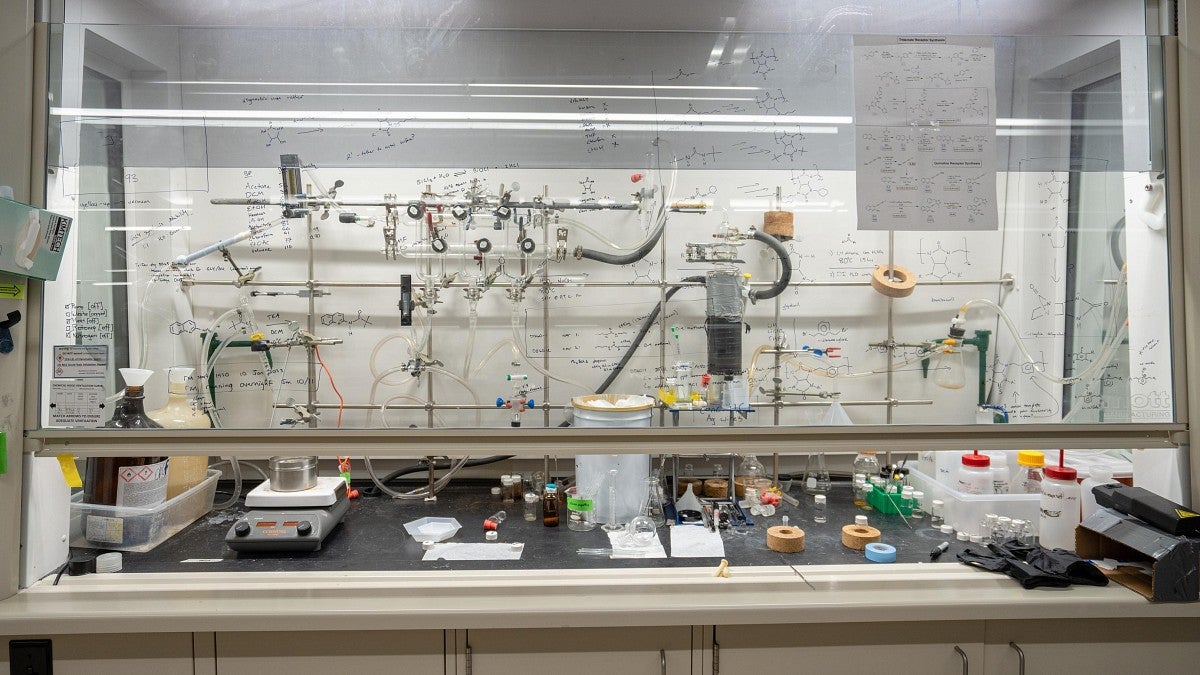
In labs across campus, College of Arts and Sciences researchers are rethinking how discovery happens, not just in the name of science, but for the health of the planet.
UO lab spaces are some of the most resource-intensive areas on campus, using two to three times more energy than typical offices and generating unique kinds of waste that aren’t collected through regular recycling streams. In response, the Sustainable Labs program has just launched, offering researchers a flexible framework to reduce waste, conserve energy and water, and build more sustainable lab cultures.
“We wanted something realistic for busy research teams,” said Sarah Stoeckl, associate director in the Office of Sustainability. “Each badge focuses on one area, like waste reduction or energy conservation, so labs can start small and build over time."
Developed in-house by the Office of Sustainability and Environmental Health and Safety, the program takes a “choose-your-own-adventure” approach to sustainability. Labs select which actions they want to incorporate into their lab practices, earning them themed badges that mark their progress.
The current design also encourages creativity. Participating labs can combine their badges into molecule-shaped displays that showcase their chosen initiatives. For teams that want to go further, the program offers Level 2 badges with advanced challenges and bragging rights to match.
“We didn’t want a checklist or a one-size-fits-all certification,” Stoeckl said. “This is about empowering researchers to make changes that make sense for their work.”
During the pilot phase, four labs helped test the model, identifying practical steps that made a measurable difference. As it stands, the program has already helped recycle more than 60 pounds of single-use plastic, saving roughly 290 pounds of carbon dioxide equivalent emissions.
The Sustainable Labs framework has strengthened Julia Widom's lab, and those who work in it have aligned with the program to work toward generating less waste.
“It got everyone talking about how we use resources day-to-day,” said Julia Widom, a College of Arts and Sciences chemistry and biochemistry assistant professor. “Little things like how we wash glassware or organize waste suddenly became shared goals instead of individual habits.”
The Widom Lab investigates how RNA folds into specific structures to perform diverse cellular functions beyond just carrying genetic information. They focus on riboswitches and RNA splicing in bacteria and study RNA structure and dynamics using biophysical methods such as ultrafast and single molecule spectroscopy.
Maddie Kadrmas, the lab manager of the Widom lab, and who helped implement the program, said the initiative has changed how she saw her role as a researcher.
“It’s easy to forget how much energy and material goes into lab work,” she said. “This helped me see that we can do world-class science and still make environmentally conscious choices.”
That sense of shared ownership is intentional. Stoeckl said students often spark conversations about joining the program.
“We’ve noticed that sustainability tends to bubble up from the bottom,” she said. “Students ask questions; ‘What happens to all this waste? Can we recycle this?’ and that curiosity is what drives labs to take part.”
The program also highlights that sustainability and scientific rigor aren’t competing priorities. Instead, they can actually reinforce one another.
“Good science depends on precision and care,” Stoeckl said. “Those same principles apply to how we handle materials and energy. It’s all about being thoughtful with our resources.”
As the program launches, the Sustainable Labs program is heating up. More UO research groups across the natural and social sciences are preparing to join, with new badges under development — including one focused on sustainable fieldwork practices.
“Our long-term goal is to create a culture where sustainability is just part of how we do research,” Stoeckl said. “The idea is to make doing the right thing the easy thing.”
—By Maria Soto Cuesta, College of Arts and Sciences
